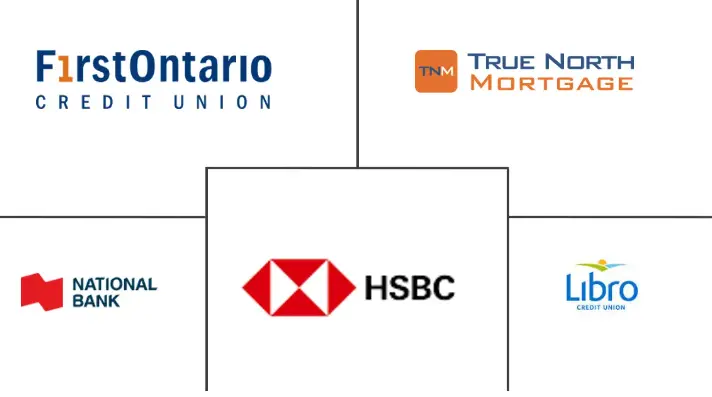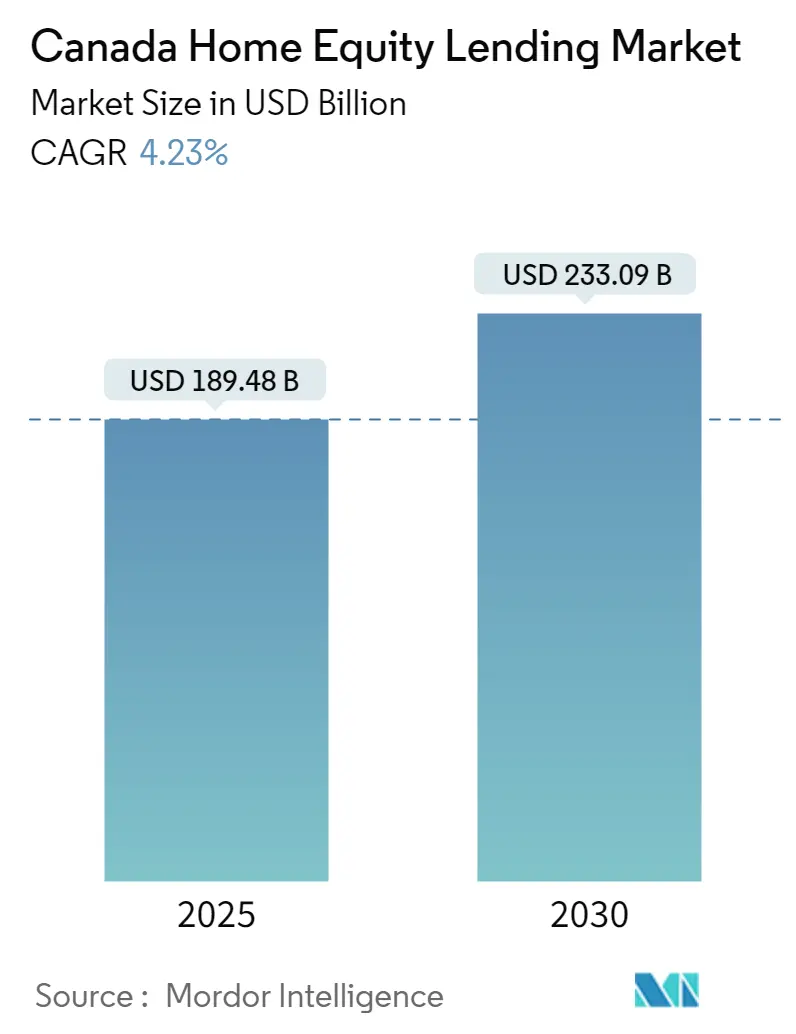
Canada Home Equity Lending Market Analysis by Mordor Intelligence
The Canada Home Equity Lending Market size is estimated at USD 189.48 billion in 2025, and is expected to reach USD 233.09 billion by 2030, at a CAGR of 4.23% during the forecast period (2025-2030).
The market for home equity loans has witnessed substantial growth in Canada and is projected to sustain its expansion in the foreseeable future. Home equity loans, a type of consumer debt or second mortgage, allow homeowners to borrow against the equity in their homes. It is a second mortgage taken out on top of the original mortgage used to purchase the home. Homeowners can access additional funds using the equity they have built in their homes. The amount that can be borrowed through a home equity loan is determined by subtracting any outstanding mortgages on the home from its current value. Home equity loans provide substantial funds, and the eligibility requirements for these loans are generally more accessible than other types of loans. Additionally, homeowners can use their homes as collateral for these loans.
Housing prices in Canada have increased in the past six years after a long period of stagnation. This rise, while moderate compared to other countries, is fueled by increased mortgage debt. Higher real estate values and lower regulatory restrictions encourage Canadians to use their homes as collateral. Residential mortgage debt constitutes a significant portion of Canada's household debt, making up 74%. This type of debt plays a crucial role in building net worth for individuals. In contrast, lines of credit comprise 16% of household debt, while credit card debt accounts for a smaller percentage at 4%.
New mortgage rules were implemented in the previous year, making it difficult for Canadians to access their home equity via traditional methods. These requirements also came with increased interest rates, making qualifying for a home equity line of credit solutions more challenging than ever. One change is that under the new rules, Canadians must now be able to pay off their home equity line of credit within 25 years.
Canada Home Equity Lending Market Trends and Insights
A Rise in Home Prices is Boosting the Growth of the Home Equity Lending Market
Several factors influence the Canadian market for home equity loans. These factors encompass the rise in home prices, the prevailing inclination toward home enhancements and advancements, the tax benefits associated with interest deductions, and the comparatively lower interest rates compared to alternative borrowing options. It is essential to consider the availability of a significant lump sum of money and the option to make consistent monthly payments.
Housing Prices in Canada are expected to keep rising in the current year. The average price for a home in Canada increased by around 17% year-over-year in the fourth quarter of the previous year, reaching USD 779,000. In most housing markets, prices increased by more than 3%. Most of the rise in house prices was seen across Ontario, primarily in the Greater Toronto Area and most significant cities in British Columbia. This increase is majorly driven by detached, single-family homes whose average price grew by nearly 21% compared to the end of the previous year. Meanwhile, due to the rise in real estate, Canadian home equity line of credit (HELOC) payments surged in Q3 last year, up by 0.7% from the previous quarter.
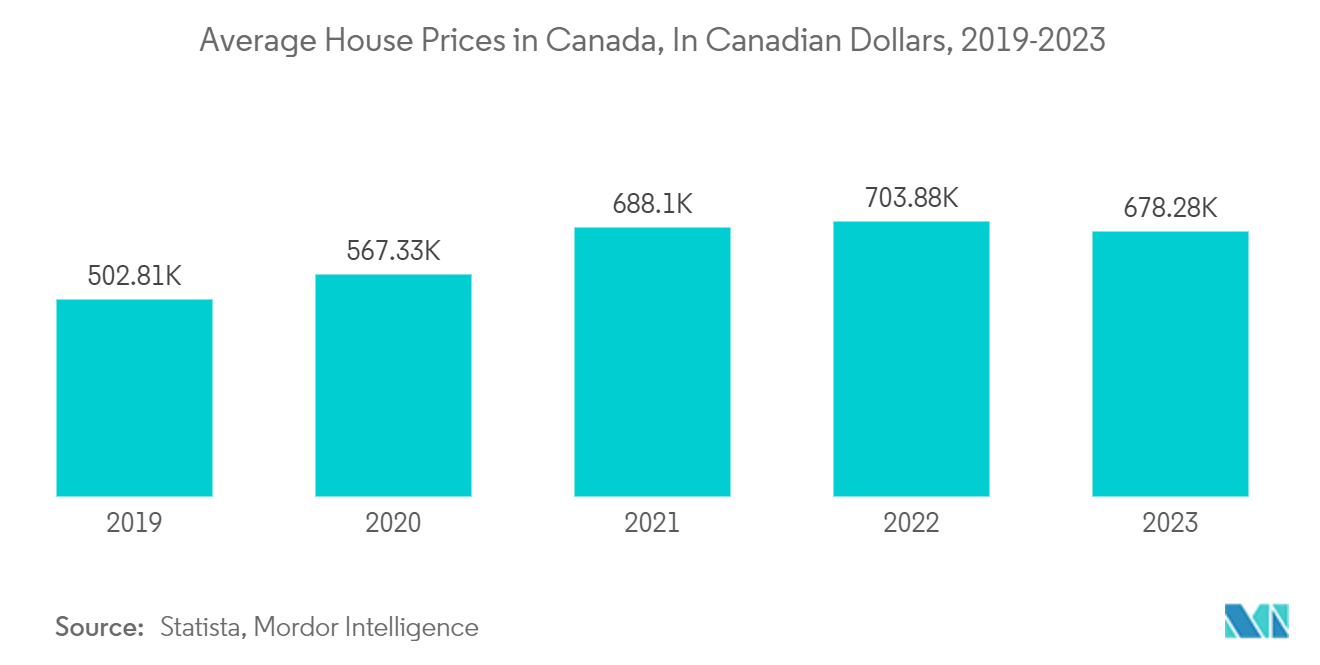
Technological Advancements in Home Equity Borrowing Process Facilitating Market Growth
The market is witnessing a rise in homeowners who are well-versed in technology, leading to a greater demand for digitalization in the home equity loan process. Investments in automating mortgages are also on the rise. Lenders are progressively depending on data and technological solutions to flourish and broaden their presence in the market.
Furthermore, digitalizing the loan origination process helps streamline operations and minimize obstacles. Home equity loan originators increasingly embrace artificial intelligence to offer personalized guidance and recommendations. As a result, technological advancements provide clients with a convenient avenue to obtain loans.
These factors are expected to boost the growth of the market over the forecast period.
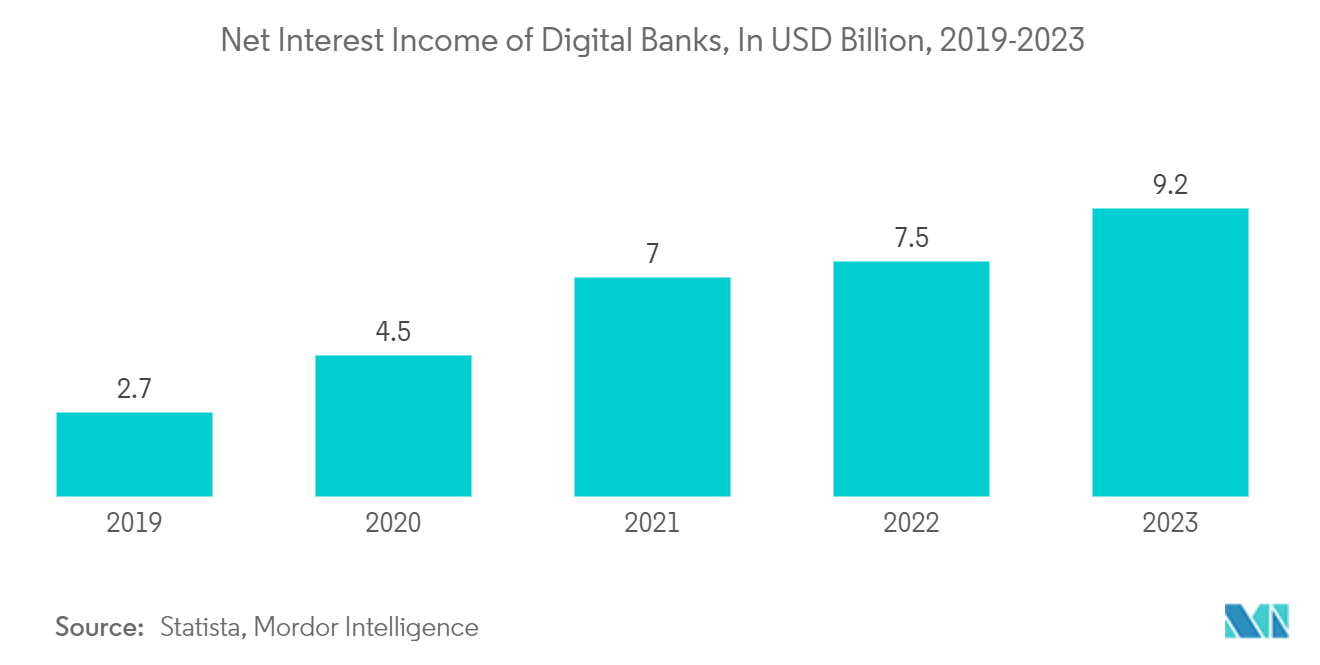
Competitive Landscape
The Canadian home equity lending market is semi-consolidated, with a few key players holding significant market share. As banks and financial institutions leverage technology and introduce innovative products, they expand their market reach by securing new agreements and exploring untapped markets. Notable participants in this market include HSBC Bank Canada, Tangerine Direct Bank, National Bank of Canada, First Ontario Credit Union, and B2B Bank.
Canada Home Equity Lending Industry Leaders
-
HSBC Bank Canada
-
Tangerine Direct Bank
-
National bank of canada
-
First Ontario Credit Union
-
B2B Bank
- *Disclaimer: Major Players sorted in no particular order
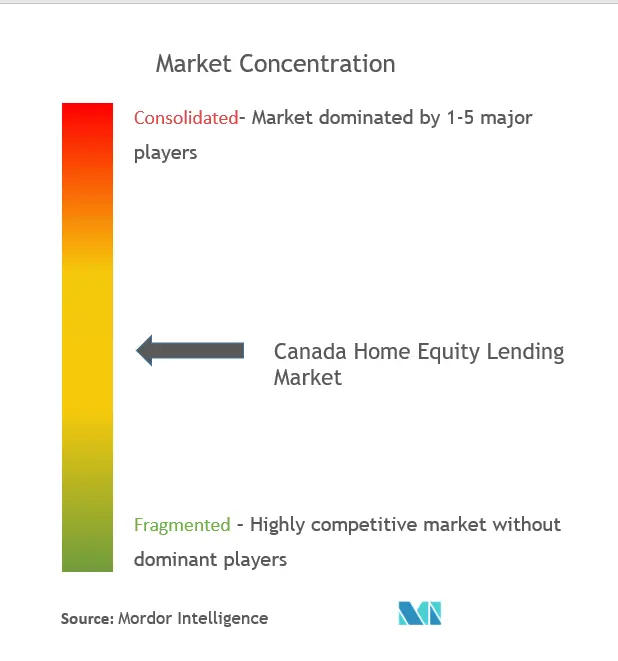
Recent Industry Developments
- November 2023: National Bank acquired the office and commercial space at 700 Saint-Jacques, Montreal. This space, which encompasses the entire 10-floor base of the building, including the main floor entrance area, eight office floors, and a mezzanine, will allow the bank to strengthen its real estate portfolio.
- September 2023: FirstOntario Credit Union introduced the First Home Savings Account (FHSA) to assist its members in reaching their homeownership aspirations.
Canada Home Equity Lending Market Report Scope
A home equity loan allows a person to borrow money by using the equity in their home as security. This type of loan can be a second mortgage, a line of credit, or a combination of secured lending options. Often called a second mortgage, it is popular among homeowners because of its lower interest rates than unsecured loans, making it a desirable choice for those who own a home.
The Canadian home equity lending market is segmented by type, service providers, and mode. By type, the market is segmented into fixed-rate loans and home equity lines of credit. By service providers, the market is segmented into commercial banks, financial institutions, credit unions, and other creditors. By mode, the market is segmented into online and offline. The report offers market sizes and forecasts in terms of value (USD) for all the above segments.
| Fixed Rate Loans |
| Home Equity Lines of Credit |
| Commercial banks |
| Financial Institutions |
| Credit Unions |
| Other Creditors |
| Online |
| Offline |
| By Type | Fixed Rate Loans |
| Home Equity Lines of Credit | |
| By Service Provider | Commercial banks |
| Financial Institutions | |
| Credit Unions | |
| Other Creditors | |
| By Mode | Online |
| Offline |
Key Questions Answered in the Report
How big is the Canada Home Equity Lending Market?
The Canada Home Equity Lending Market size is expected to reach USD 189.48 billion in 2025 and grow at a CAGR of 4.23% to reach USD 233.09 billion by 2030.
What is the current Canada Home Equity Lending Market size?
In 2025, the Canada Home Equity Lending Market size is expected to reach USD 189.48 billion.
Who are the key players in Canada Home Equity Lending Market?
HSBC Bank Canada, Tangerine Direct Bank, National bank of canada, First Ontario Credit Union and B2B Bank are the major companies operating in the Canada Home Equity Lending Market.
What years does this Canada Home Equity Lending Market cover, and what was the market size in 2024?
In 2024, the Canada Home Equity Lending Market size was estimated at USD 181.46 billion. The report covers the Canada Home Equity Lending Market historical market size for years: 2020, 2021, 2022, 2023 and 2024. The report also forecasts the Canada Home Equity Lending Market size for years: 2025, 2026, 2027, 2028, 2029 and 2030.
Page last updated on:
Canada Home Equity Lending Market Report
Statistics for the 2025 Canada Home Equity Lending market share, size and revenue growth rate, created by Mordor Intelligence™ Industry Reports. Canada Home Equity Lending analysis includes a market forecast outlook for 2025 to 2030 and historical overview. Get a sample of this industry analysis as a free report PDF download.
